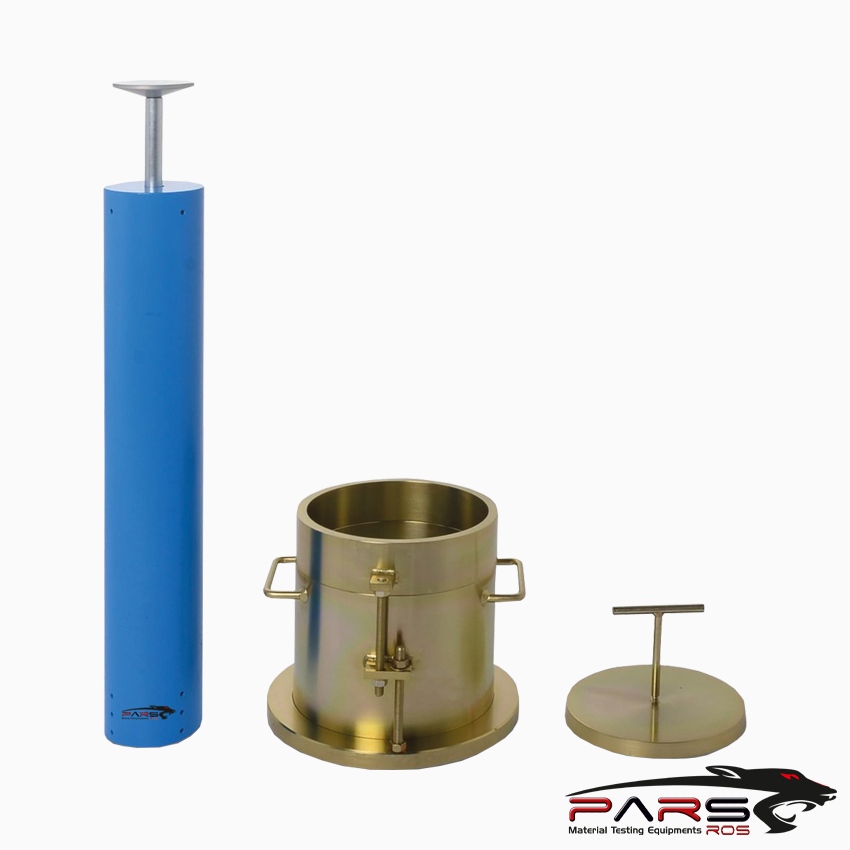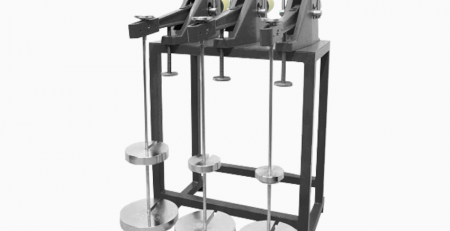Standart Proctor Test of Soil
Standard Proctor Test | Protect Compaction Test | Compaction Test | Lab Report | Apparatus
Standard Proctor Test
Standard Proctor Test is carried out to study or understand the soil’s compaction characteristics with variable moisture content.
The test is performed to estimate the maximum load the soil could bear hence ultimately reducing the voids present in the soil.
The Proctor Test is one of the basic tests carried upon soil while dealing with soil in geotechnical engineering.
Being a basic and easy Proctor Test gives a reliable result for understanding the behavior of soil.
What Is Compaction of Soil
Soil compaction is a process in which soil dissipates mechanical stress and condenses.
The soil consists of solid particles and water or/and air-filled pots.
A more detailed explanation of the three-phase nature in the soil is provided in the soil as a three–phase system.
When subjected to stress, the soil particles are redistributed within the soil mass and the void volume decreases resulting in condensation.
Mechanical stress can be applied through kneading, or by dynamic or static methods.
Benefits Of Compaction of Soil
The following are the major benefits of soil compaction,
Increases bearing capacity and stability
Permeability (hydraulic conductivity) decreases
Freeze–melt cycles have reduced heating
Erosion can be controlled
Subscription down
Proctor Compaction Test
Proctor compaction test measures the maximum unit load that a particular type of soil can be compacted to use a controlled compact force at an optimal water content.
It is the most common laboratory soil test and is the basis for all engineered compact soil placements for embankments, pavements, and structural mills.
The results of the Proctor test are compared to the measured densities of the compacted filled space to determine the degree of soil density.
The Proctor test was invented in 1930 by Ralph R. Proctor, a field engineer at the Bureau of Waterworks and Supplies in Los Angeles, California.
This process, which typically simulates in-situ compaction processes performed during the construction of earth dams or embankments, is the most
common laboratory test conducted to achieve soil compressibility.
Proctor Compaction Test Apparatus
The following are the apparatus used in the proctor test of soil,
Cylindrical Metal Mold: having an internal diameter of 4” or 6”, an internal height of 4.6”; and the mold should have a detachable base plate & collar of 2 inches (5.08 cm).
Rammer: weighing 5.5 lbs (2.5 kg) & having a fall of 12 inches (30.5 cm), with a flat circular face of 2” diameter.
Sensitive Balance:sensitivity ranging from 0.1 gram to 1 gram.
Thermostatically controlled oven (105°C +- 110°C)
Steel straight edge.
Moisture containers.
Sieve No.4.
Tray & scoop.
Graduated cylinder.
Mixing tools. (spoon, trowel, spatula).
Standard Proctor Test Procedure
Proctor test procedure is as follows
Collectsoil sample weight of about 20 kg by passing it through the IS sieve75 mm and 20 mm.
Then find out the % of soil samples retain on 20 mm and 4.75 mm sieves. If the % of retained soil on the 7 mm sieve is more than 20 then choose 150 mm dia mold
for the test and if the % of soil retained on the 4.7 mm sieve is less than 20% then choose 100 mm dia mold for a test.
Now, combine the % soil passing through 75 mm and retain 4.75together to prepare at least 16 to 18 kg of soil sample for test.
Take standard Procter test mold with base plate dry and clean it properly and apply slight grease inside.
Measure the weight of mold with base plate at an accuracyof 1 gm. (W1)
Collect 16-18 kgof soil sample and add water to bring water content in soil up to 4% for any soil and 8% for a clayed type of soil.
Prepare at least6-8 parts from a whole soil sample.
Fix collaron mold and place it on a hard surface.
Take 5 kg from the prepared soil sample and fill the mold in 3 equal layers such that each layer is about 1/3rd of the total height of the mold.
Compact each layer with a rammer by giving 25 nos. of blows.
The compaction by the rammer is done properly such that the rammer hits the entire area of mold filled with soil.
Fill the mold up to the top of the collar attached. Once the soil is filled up remove the collar from the top of the mold.
Cut down and remove extra soil outings from a mold with a straight edge.
Now weight mold with soil sample as W2.
Take out all soil samples from the mould.
Collect at least 3 samplesof soil for water content
Add 3% more waterto the remaining soil sample and repeat the above steps.
Do this more 6%, 9%, and 12% water content and repeat the same steps.
From water content, the weight of mould, and the weight of mold with soil find out the bulk density of soil.








Leave a Reply